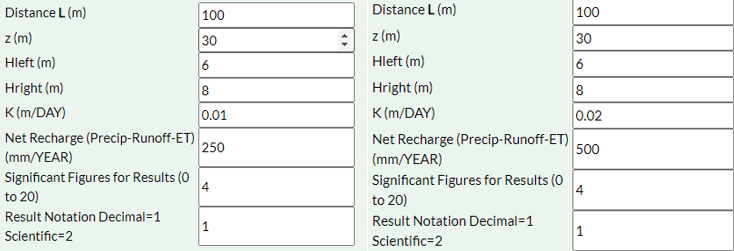Groundwater model non-uniqueness is the phenomenon in which different sets of model parameters produce the same groundwater system conditions. It is common practice to use groundwater models to determine system properties by matching model results to field observations such as water levels and groundwater discharge. This process is called calibrating a model. After a match is obtained the model is typically used to make predictions. However, non-uniqueness can cause the calibration to produce parameters that are not representative of the system, resulting in inaccurate model predictions.
You can explore this concept by using WTR with these two datasets:

- How many differences can you see in the output results?
- How do the water levels differ?
- How do the flow rates differ?
- Would you trust parameters of a model that matches the water levels, but does not consider the water balance?
Finding Input Data
Many governments provide overview information regarding preciptation, runoff, and evapotranspiration. Here are a some examples from Canada:
Additional Reading
More about recharge, runoff, evapotranspiration, and aridity can be found in Groundwater Project books, including the following:
- A Glossary of Hydrogeology
- Large Aquifer Systems Around the World
- Groundwater in Our Water Cycle: Getting to Know Earth's Most Important Fresh Water Source
More information on the basics of groundwater flow can be found in Groundwater Project books, including the following: